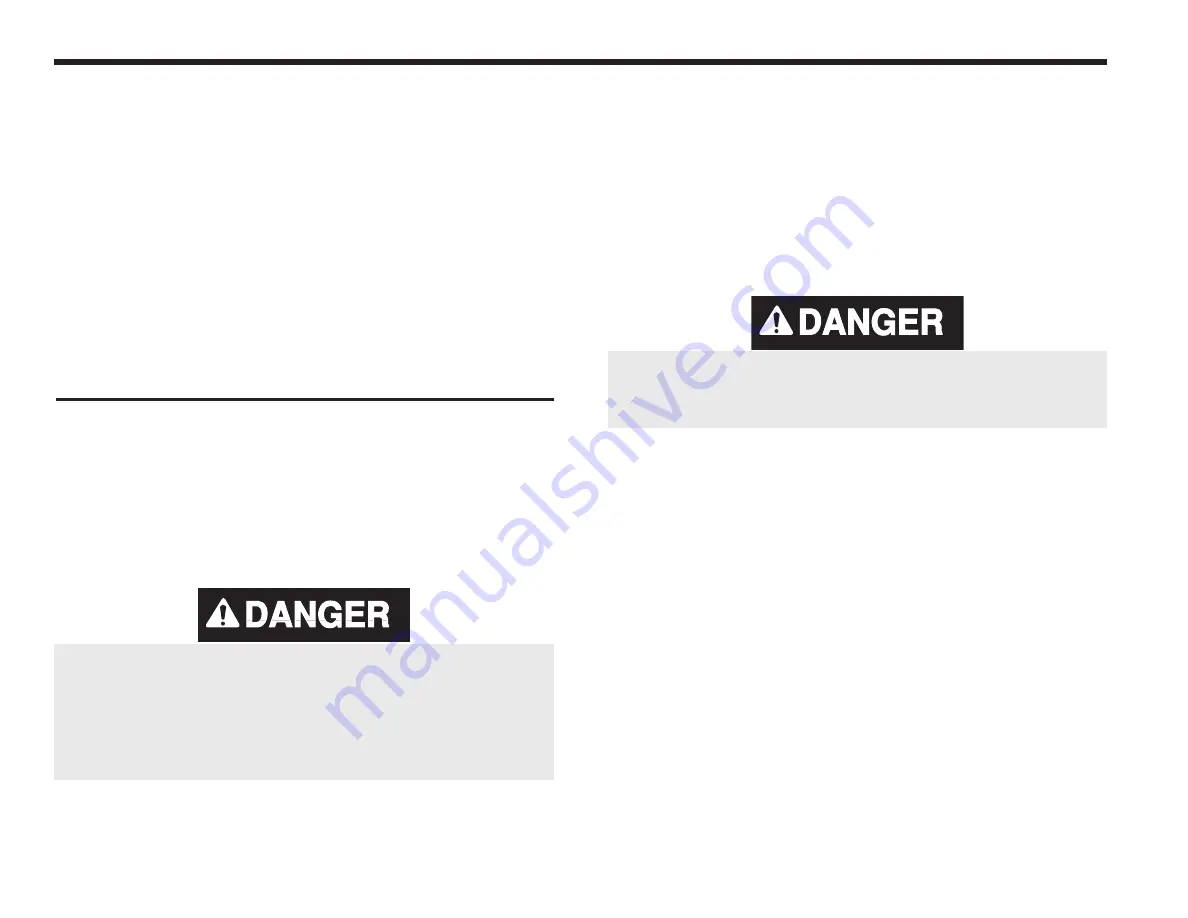
Post-Fueling Procedures
1. When you have finished fueling, replace fuel fill cap and wash
off any fuel spillage around fuel fill area. Discard, in a safe place,
any rags you may have used to wipe off fuel spills.
2. Open engine compartment and all hatches, windows, doors and
compartments closed during fueling. Inspect these areas for fuel
fumes or fuel line leakage visually and by smelling. Check out
any sign of fuel leakage or any indication of fumes and correct
problem before starting the engine.
3. Run bilge blower at least four minutes before restarting engine
to ventilate engine compartment.
OPERATING YOUR BOAT
Starting the Engine
Important: Falls from moving boats are a major cause of fatal
recreational boating accidents. Do not allow passengers to ride
on the bow with feet hanging over the side or ride while sitting
on the stern, gunwales, or seat backs. The Coast Guard con-
siders these acts to be negligent or grossly negligent
operation and prohibits them by law.
The following information is only a general guide. Chapter 4 has
specific starting instructions for boats with battery selector switches.
Detailed instructions are also in the engine owner’s manual. Be sure
to read and follow all of those instructions.
1. Secure boat to the dock or mooring slip before attempting to start
engine. Keep boat secure until engine is running and warmed up.
2. Check lubricating fluid levels. Check fuel supply to make sure
you have enough fuel for your planned excursion.
3. To prevent an explosion or fire, look for leaks in fuel, oil, coolant,
exhaust, and power steering systems. Be aware of any odors of
these fluids.
4. Make sure the throttle is in the neutral position.
5. Start the engine. Refer to your engine owner’s manual for rec-
ommended procedures for break-in, service, and other related
operation.
6. Turn ignition key to START. Release key and allow to return to
RUN after engine starts. If engine fails to start, wait one minute.
Move throttle only once to maximum position then back to the
neutral position. Try to start engine again.
Note: Transmission must be in neutral position before engine
will turn over.
Important: Do not operate starter continuously for more than
15 seconds without pausing. Allow starter to cool at least three
minutes between start attempts.
5-8
DANGER:
Gasoline vapors are highly explosive. Run bilge
blower for at least 4 minutes before starting engine. Check engine
and fuel compartments for fumes or accumulation of fuel.
DANGER: Carbon Monoxide Hazard!
A cold engine pro-
duces more carbon monoxide than a warm engine. Provide
adequate ventilation in the cabin and cockpit to prevent expo-
sure and reduce the possibility of carbon monoxide
accumulation. Open all hatches, doors, windows, and side
vents to increase air movement.
Summary of Contents for SSX-236
Page 1: ...S S X 2 3 6 2 5 6 2 7 6 2 0 0 9 O W N E R O P E R AT O R M A N U A L...
Page 2: ......
Page 4: ......
Page 17: ...1 7...
Page 18: ......
Page 22: ......
Page 24: ......
Page 40: ...2 16...
Page 52: ...3 12...
Page 80: ...5 16...
Page 98: ......
Page 106: ......
Page 112: ......
Page 113: ...WIRING SCHEMATICS 12 12 1 236 SSX...
Page 114: ...12 2 236 SSX...
Page 115: ...12 3 256 SSX...
Page 116: ...12 4 256 SSX...
Page 117: ...12 5 276 SSX...
Page 118: ...12 6 276 SSX...
Page 119: ......
















































